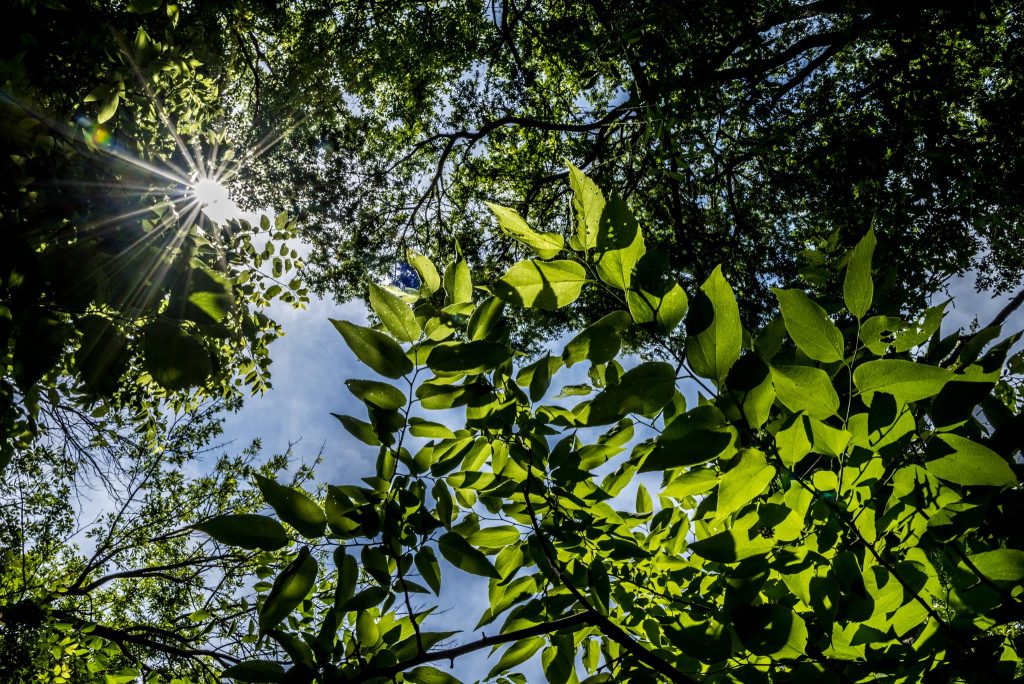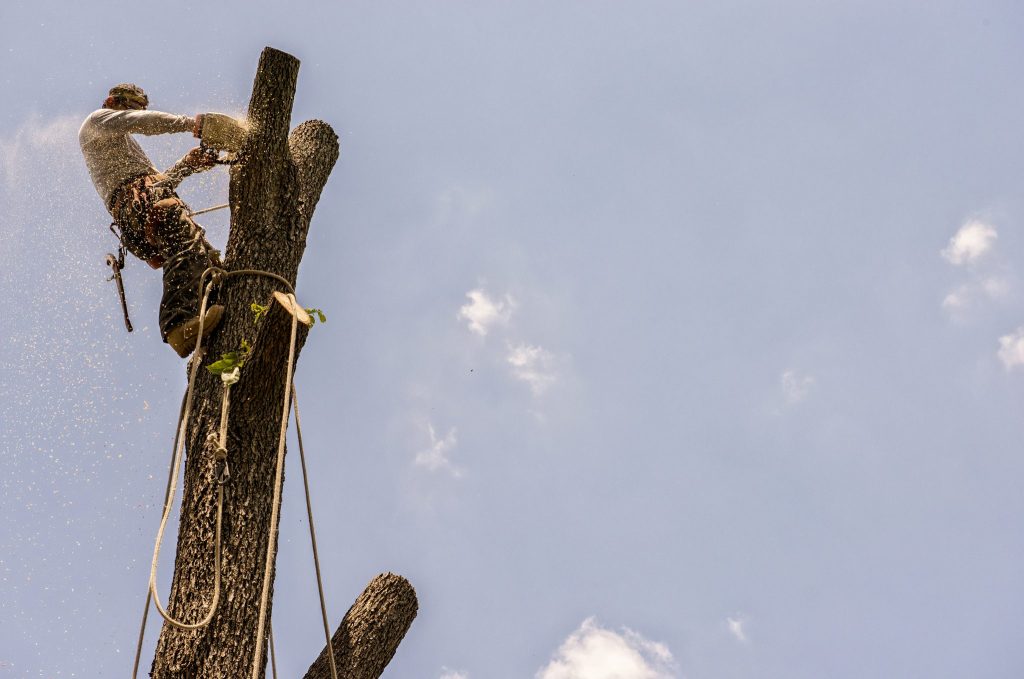The giving trees
Lake Highlands hasn’t yet let concrete swallow the nature surrounding our homes and businesses.
Residents care so much about trees that they’ve memorialized them as artwork and fought off those destroying them with chainsaws. The man who sawed Lake Highlands Park’s Indian marker shaped tree was arrested after neighbors blockaded him until police arrived. If that sounds intense, may we remind you of the White Rock area resident who climbed a tree to prevent Oncor from cutting its branches.
Commercial and residential development threatens the health and sustainability of Dallas’ limited green space. The city’s tree ordinance requires developers to replace trees that have been uprooted because of construction or pay a reforestation fee, but companies often find loopholes to avoid following the regulations. An updated ordinance has been in the works since 2010, and it’s finally slated to appear on the City Council agenda this June.
Home additions and renovations also wreak havoc on trees’ root systems, unless proper precautions are taken. “The soil composition, materials stored, foot traffic will kill a tree three to five years after construction is complete,” says Scott Dahlberg, a Lake Highlands arborist.
Of course, you may not be the tree hugging type, and none of this may matter to you. But considering trees are essential to the ecosystem, the Lorax might be onto something.
Neighborhood tree huggers
Anita Sieger frequently drives past her former house at Broken Bow Road to visit two red oak trees.
“They’re kind of like small children of mine,” she says.
Sieger planted the oaks after the death of a hackberry tree in their former front yard. The thought of a tree-less yard was unacceptable to her, but purchasing new trees was costly.
So Sieger became resourceful. She knew DART purchased property from the Knights of Columbus at Northwest Highway. Several trees would die as a result of the construction. She convinced DART to allow her to excavate five trees from the site. She gave three to a friend and planted two in her yard. Sieger moved several years ago, but she still monitors the oaks.
“On my way to work or on my way home, I choose a route that takes me there, so I can check on them,” she says. “I’ve seen them grow from decent saplings to beautiful shade-providing oak trees.”
Neighborhood advocate Amy Martin has been involved in several attempts to preserve neighborhood trees, but is concerned with how few young trees people have in their yards. “In a natural forest, there’s trees of all ages. I wish people would realize their trees are aging and need to bring in new generation before old goes away … I really like how trees have to bend and adapt to one another. I think that’s a fabulous metaphor to be surrounded by.”
Oncor’s tree trimming practices tend to upset residents, but Jeri Huber took extreme measures to stop Oncor from chopping a tree at her White Rock area home. The 67-year-old climbed into the tree and refused to move until crews threatened to get a restraining order.
Hacking away histree
Before Dallas founder John Neely Bryan settled near the Trinity River and skyscrapers sprouted from plains, the Comanche used trees to navigate trails and mark resources.
The natives tied saplings to the ground with animal hide so that they grew in unusual formations. These Indian marker trees once guided the Comanche to water and shelter, but most are lost to American Indians’ disregarded history. Only nine have been documented in 24 years, according to Steve Houser, a White Rock area native, arborist and Texas Historic Tree Coalition member.
“There were a lot more than there are today,” he says.
A bent pecan tree at Lake Highlands Park near Peavy Road matched most of the criteria to be an Indian marker tree, but ultimately wasn’t old enough qualify. The marker trees must be at least 145 years old, and the pecan tree is estimated to be between 85 and 110.
Neighbors were furious nonetheless when 65-year-old Albert Santos hacked it with a chainsaw. Several Eastwood, Lake Park Estates, Lochwood and Old Lake Highlands neighbors confronted him. One even blocked Santos with a pick-up truck until five police cars arrived, Amy Martin told the Advocate in 2017.
Santos told the police that the city authorized him to cut storm-downed trees, even though he had no paperwork to prove it. Neighbors assumed he wanted to sell the pecan wood to meat smokers.
“A steady stream of residents came by, each one was angry, enraged, even livid,” Martin wrote. “Many gave the perp a piece of their mind. … It was stressed that although it was not a confirmed Indian marker tree, it was a landmark tree considered significant by authorities and deeply beloved by residents.”
The pecan tree’s lifespan was shortened because of its injuries. “For the tree that lost half its canopy, it regenerated beautifully,” Martin says. Neighbors transformed the wood pieces into art that they auctioned at the Bath House Cultural Center’s Winter Art Mart to raise money for the Dallas Parks Foundation.
“They kept the tree close to the tree,” Martin says. “I have a chunk of the tree with a gnome home built on top of it. It’s completely adorable, but there it is— a giant hunk of tree in my living room.
The beloved tree near Peavy Road isn’t the only recent hacking victim. Lucan Watkins, of For the Love of the Lake, caught two men severing the limbs of another pecan tree near White Rock Lake at Peavy and East Lake Highlands Drive in August 2016.
Did you know?
Some trees are dioecious, which means they have separate sexes, arborist Scott Dahlberg says. Cedar, ash and mulberry are distinctly male or female, while oak and birch trees can have both male and female flowers on one plant.
Trees of yore
Once upon a time, at a cultural center not so far away, a massive elm tree started to hollow.
The Dallas Park and Recreation Department deemed it was time for the sick, yet stately tree to die. Earth Rhythms, a White Rock area organization that congregates for seasonal celebrations, opted to honor the tree. The group organized a memorial that featured songs, yoga and spoken tributes. Some neighbors found the memorial excessive, and others considered it to be oddly sentimental.
After the elm was swiftly killed, artist Julia Schloss painted a butterfly on its stump that impressed even the park department. Instead of grinding the remains, an employee attempted to save the artwork. Sadly it broke before it was relocated to the cultural center.
Why trees matter
Besides cleaning the air, water and soil, trees contribute to humans’ sense of well-being and quality of life, says Steve Houser, a White Rock area native, arborist and Texas Historic Tree Coalition member.
Dallas neighborhoods with mature trees, like Lake Highlands, are cooler than neighborhoods without them. The difference can be as much as 11 degrees.
If you live within 1,400 feet of an expressway, your life expectancy is three to five years shorter because of the particulate matter from vehicle exhaust. Rows of trees can filter some of that matter.
Just one tree releases more than 400 gallons of water into the atmosphere.









